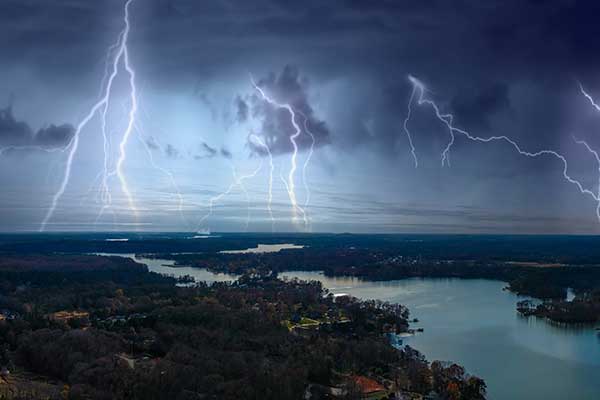Are you ready for spring weather?

Severe weather can strike in any part of the country, so it’s important to know the types of severe weather that are most common where you live. You’ll also want to stay up to date on severe weather activity by tuning in to local weather reports as well as alerts from the Emergency Alert System and/or the National Oceanic and Atmospheric Administration Weather Radio.
Tornados
On average, there are 1,251 tornados in the United States each year1 with the greatest risk in the Midwest and Southeast.
- Know the signs of an oncoming tornado, including rotating, funnel shaped clouds and the sound of your community’s sirens.
- Get to a sturdy building and head to the basement or storm cellar. If there isn’t a basement, go to a central interior room on the lowest floor (such as a hallway or closet) and stay away from windows, doors and exterior walls.
- If you can’t get to a building, find a low, flat location. Don’t seek shelter under bridges or overpasses, and never try to outrun a tornado with your car.
- Face a wall, sit down on your knees, tuck your head down toward the floor and cover your head and neck with your hands. If possible, cover your mouth with a cloth or mask to avoid inhaling any dust.
- Keep extra blankets, old mattresses or cushions in your basement or storm shelter and use them to cover your body to help protect you from any falling debris.
- In the aftermath of a tornado, steer clear of fallen or broken power lines and do not enter any damaged buildings until authorities say it’s safe to do so.
Floods
Floods are the most common natural disaster in the United States2 and can result from rain, melting snow, and overflow of dams and water systems.
- Know your community’s evacuation routes and shelters.
- Don’t attempt to walk, swim or drive through flooded roadways; it only takes six inches of water to knock you off your feet and one foot to sweep your car away.3
- Stay away from bridges over fast moving water as they could be washed away without warning.
- Have necessary supplies ready in case you need to evacuate quickly – don’t forget medications, items for your pet, batteries and chargers.
- Stay inside your car if it’s trapped in moving water, but if water is rising within the vehicle, climb onto the roof.
- If you’re inside a building, go to the highest level. If waters are rising within the building, get onto the roof and signal for help.
- Always listen to authorities and return home only when they say it’s safe to do so. Don’t touch electrical equipment if it’s wet or if there’s standing water in your home. If you can do so safely, shut off the electricity.
Keep in mind that most homeowners policies don’t cover flood damage, but insurance is available through the federal government’s National Flood Insurance Program. For more information, talk with your Horace Mann agent.
Thunderstorms and lightning
On average, there are approximately 100,000 thunderstorms in the US each year.4
- Check for dead, broken or low hanging tree branches in your yard, and cut or trim any that may be at risk of falling on your home.
- If you see a storm approaching or hear thunder, go inside immediately. If you’re stuck in your vehicle, stay in the car, close the windows and don’t touch anything metal.
- If you’re stuck outside and can’t get to a building, stay away from high grounds, water, tall trees that are isolated, metal objects, picnic shelters, sheds and dugouts.
- During a storm, avoid running your water or making calls using a landline as electricity can travel through plumbing and phone lines.
1. NOAA National Centers for Environmental Information, Monthly Tornadoes Report for Annual 2023, published online January 2024, retrieved on April 10, 2024 from https://www.ncei.noaa.gov/access/monitoring/monthly-report/tornadoes/202313.
2., 3. https://www.ready.gov/floods
4. https://www.nssl.noaa.gov/education/svrwx101/thunderstorms/